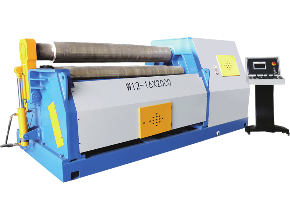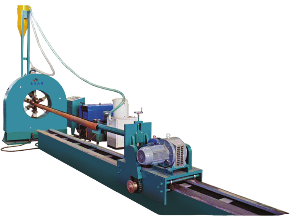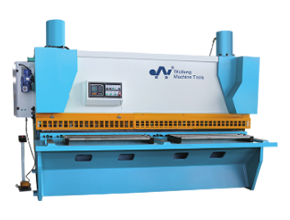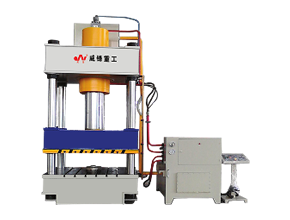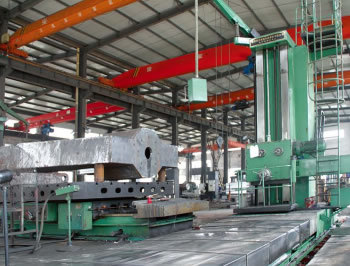Optimizing Production with CNC System Options
Release Time:
2025-10-29
Introduction
In the world of manufacturing, efficiency and precision are paramount. CNC (Computer Numerical Control) systems have been revolutionizing production processes by automating and optimizing machining operations. As industries continue to demand higher productivity, more advanced CNC system options have been developed to meet the needs of modern manufacturing. Systems like TP10S and DE15 are among the latest innovations that significantly enhance machine performance, streamline operations, and improve overall productivity.
In this blog, we will explore various CNC system options, such as the TP10S and DE15, discussing how they contribute to production optimization and their role in enhancing CNC machine functionality across different industries.
What Are CNC System Options?

A CNC system is the core controller that operates and manages CNC machines, such as milling machines, lathe machines, and press brakes. These systems act as the brain of the CNC machine, interpreting the design and instructions programmed into the machine, and guiding the movements and operations of cutting tools. Different CNC systems offer various features and functionalities that can be customized depending on the specific needs of the user and the production process.
Modern CNC systems, such as the TP10S and DE15, come with advanced functionalities that improve overall machine performance, speed, accuracy, and efficiency, making them essential components in optimizing production processes.
Key CNC System Options for Production Optimization

1. TP10S CNC System
The TP10S is a cutting-edge CNC system known for its precision and user-friendly interface. It is specifically designed for high-accuracy applications in various industries, such as metalworking, automotive, and aerospace manufacturing. The TP10S system offers several advantages for production optimization:
High-Speed Processing: The TP10S system uses advanced algorithms to optimize machine speed while maintaining precision. This is particularly beneficial in high-volume production environments where time efficiency is critical.
Multi-Axis Control: The TP10S supports multi-axis control, allowing for complex machining operations with fewer tool changes and faster cycle times.
User-Friendly Interface: The system features an intuitive interface that makes it easy for operators to program and control the machine. This reduces the learning curve and improves operator efficiency.
Enhanced Diagnostics and Maintenance: The TP10S system provides real-time diagnostics, enabling proactive maintenance and minimizing downtime.
Applications of TP10S CNC System:
Automotive Manufacturing: For precision machining of engine components, chassis parts, and structural elements.
Aerospace Industry: Ideal for machining aircraft parts that require tight tolerances and high strength.
Metalworking: Used for producing complex parts from metal, such as gears, shafts, and housings.
2. DE15 CNC System
The DE15 CNC system is designed for high-performance manufacturing applications, offering a combination of power, precision, and versatility. The DE15 system is particularly beneficial for heavy-duty machines used in industries like construction, metal fabrication, and energy production.
Powerful Processing: The DE15 system is equipped with advanced processing capabilities that handle large and complex workloads, making it suitable for industries that require robust machine performance.
Precision Control: It offers high precision, allowing manufacturers to achieve tight tolerances and high-quality finishes even on large, complex parts.
Flexible Programming Options: The DE15 allows for a range of programming methods, from G-code programming to CAD/CAM integration, offering flexibility to adapt to different manufacturing needs.
Energy Efficiency: The system is optimized for energy efficiency, helping to reduce overall energy consumption during production.
Applications of DE15 CNC System:
Construction Equipment: Used for machining large structural components like beams, frames, and support structures.
Heavy Machinery: Ideal for producing parts for heavy machinery used in mining, agriculture, and industrial applications.
Energy Sector: Essential in the manufacturing of components used in oil and gas, power plants, and renewable energy systems.
How CNC System Options Enhance Production Efficiency
The selection of a CNC system is crucial in ensuring production optimization. Different CNC system options, such as the TP10S and DE15, can drastically improve machine performance and productivity in the following ways:
1. Reduced Setup Time
CNC systems like the TP10S and DE15 reduce setup time by allowing quick tool changes, automated calibration, and faster program loading. With fewer manual adjustments and more automation, these systems help manufacturers save valuable time during production setups.
2. Improved Accuracy and Precision
CNC systems offer superior accuracy compared to manual machinery, ensuring that each part is made to exact specifications. Systems like the TP10S and DE15 incorporate advanced algorithms and precise controls that minimize errors, improve repeatability, and ensure high-quality production.
3. Increased Machine Uptime
With real-time monitoring, predictive maintenance, and automatic diagnostics, CNC systems reduce the risk of breakdowns, ensuring maximum machine uptime. This reduces maintenance costs and increases the overall productivity of manufacturing processes.
4. Scalability
The flexibility of CNC systems like the TP10S and DE15 allows manufacturers to scale production with ease. These systems can adapt to different production volumes, from low-volume custom parts to high-volume mass production, without compromising performance.
5. Enhanced Process Integration
CNC systems can integrate with ERP (Enterprise Resource Planning) and MES (Manufacturing Execution Systems), enabling seamless data flow between machines, operations, and business systems. This integration allows for optimized production planning, resource allocation, and real-time decision-making.
CNC System Options and Their Impact on Various Industries
CNC systems play a significant role in enhancing the efficiency of manufacturing processes across various industries. Here's how they impact key industries:
1. Automotive Manufacturing
The automotive industry requires high-volume, high-precision manufacturing processes to produce components like engine parts, suspension systems, and body frames. CNC systems like the TP10S offer multi-axis control, precision, and speed, making them ideal for automotive production lines.
2. Aerospace Manufacturing
Aerospace manufacturing demands extremely tight tolerances and high-strength components. The DE15 CNC system's powerful processing and precision make it an ideal choice for producing aircraft components such as wings, fuselages, and engine parts.
3. Heavy Machinery and Construction
The heavy machinery and construction industries rely on CNC systems for producing large and complex parts, including beams, cylinders, and frames. The DE15 system’s versatility and ability to handle large workloads make it ideal for these applications.
4. Metalworking and Fabrication
CNC systems are used extensively in metalworking for tasks like cutting, drilling, milling, and bending metal parts. The TP10S system’s precision and automation make it suitable for high-precision metal parts and components in industries such as electronics, industrial equipment, and machinery manufacturing.
FAQ: CNC System Options
Q1: What is the difference between TP10S and DE15 CNC systems?
The TP10S is a versatile CNC system suited for high-precision applications in industries like automotive and aerospace, while the DE15 is more powerful and is ideal for heavy-duty applications in construction and energy sectors.
Q2: How does CNC automation improve production efficiency?
CNC automation reduces manual intervention, speeding up setup times, minimizing human error, and increasing machine uptime, all of which lead to greater overall production efficiency.
Q3: Can CNC systems be integrated with other software systems?
Yes, modern CNC systems, including the TP10S and DE15, can be integrated with ERP and MES systems to optimize production processes, improve resource management, and enable real-time decision-making.
Q4: What industries benefit most from CNC machine optimization?
Industries like automotive, aerospace, heavy machinery, and metal fabrication benefit significantly from CNC system optimization due to their need for high precision, speed, and efficiency in production.
Q5: Are there any energy-saving features in modern CNC systems?
Yes, modern CNC systems like the DE15 incorporate energy-efficient features that help reduce power consumption during operation, contributing to more sustainable manufacturing practices.
Conclusion
Choosing the right CNC system, such as the TP10S or DE15, can have a profound impact on the efficiency, accuracy, and productivity of your manufacturing operations. By investing in advanced CNC technology, manufacturers can streamline their processes, reduce operational costs, and produce high-quality products at faster speeds. Whether you’re in automotive, aerospace, construction, or metal fabrication, CNC system options are essential for staying competitive in today’s fast-paced manufacturing landscape.
For more information about CNC systems like TP10S and DE15, visit HAVI CNC Machinery.
Previous Page:
Related News


